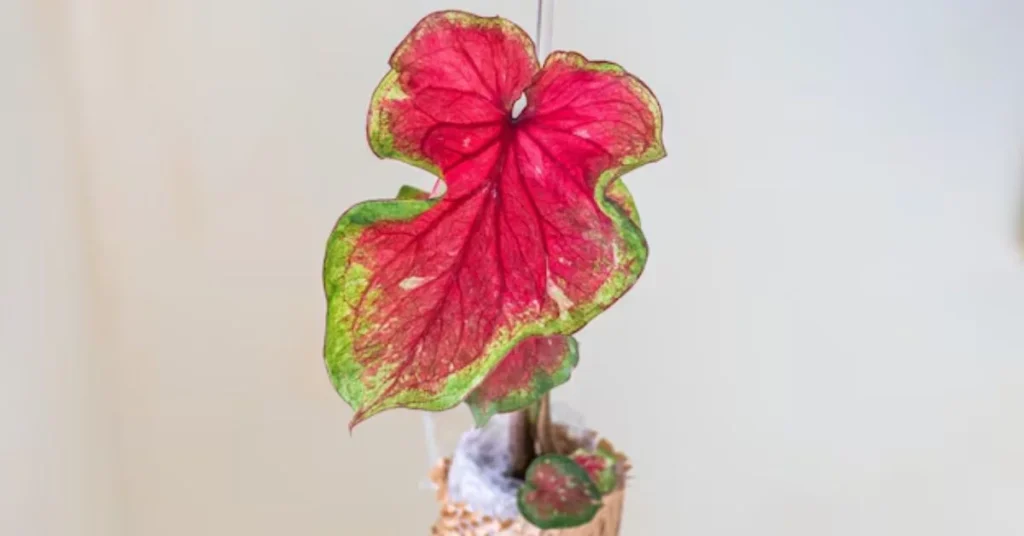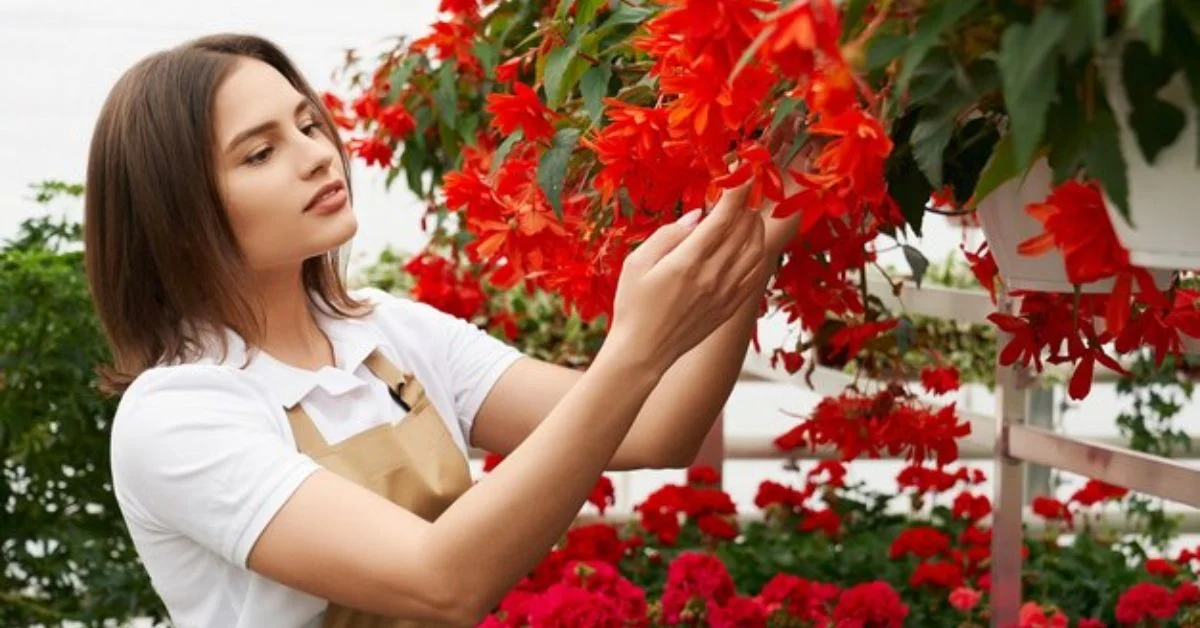Begonia Mallacoota, known for its eye-catching leaves and resilient nature, is a plant that transforms any garden or indoor space with its vibrancy. This versatile plant has gained popularity among gardening enthusiasts for its beautiful appearance and minimal care requirements. For both novice and experienced gardeners, Begonia Mallacoota offers the perfect combination of visual appeal, ease of maintenance, and adaptability, making it a top choice for a range of settings.
In this article, we will dive into the world of Begonia Mallacoota, uncovering the care tips, propagation techniques, and other essential details that can help you grow and maintain a healthy plant. With insight into its unique foliage, soil needs, and adaptability, we’ll discuss why Begonia Mallacoota is a must-have addition to your plant collection.
1. Characteristics of Begonia Mallacoota
Begonia Mallacoota is celebrated for its striking foliage, which often features a blend of dark greens, reds, and silver spots that can vary in intensity depending on light and care conditions. Known among plant enthusiasts for its vivid and unique appearance, it is sometimes compared to other spotted Begonia types, such as the Begonia maculata. However, Begonia Mallacoota stands out due to its distinct color patterns and adaptability.
The plant grows to a manageable height, typically reaching between 1 to 2 feet, and displays asymmetrical, wing-like leaves with a soft, velvety texture. Due to its aesthetic appeal, it is often chosen to add visual contrast to indoor spaces or enhance the diversity of outdoor gardens.
2. Soil and Light Requirements
Optimal Soil for Growth
To thrive, Begonia Mallacoota requires soil that is both well-draining and rich in organic matter. Similar to the soil requirements for Begonia maculata, this variety prefers a mixture that holds moisture but doesn’t become overly saturated. The best Begonia maculata soil mix includes components like peat, perlite, and a bit of sand, which provides the ideal balance of water retention and drainage.
When planting Begonia Mallacoota, choose a pot with drainage holes to prevent root rot, which can occur if the soil remains overly damp. Adding a small layer of gravel at the base of the pot can also help facilitate drainage.
Light Conditions
Although it’s tolerant of low-light conditions, Begonia Mallacoota grows best in bright, indirect light. Direct sunlight may scorch the leaves, causing their vivid colors to fade. If grown indoors, place the plant near a window where it can receive filtered light. Outdoors, it performs well in a shaded or partially shaded area that provides protection from intense afternoon sun.
3. Watering and Humidity Needs
As a tropical plant, Begonia Mallacoota enjoys moderate to high humidity levels, making it an ideal candidate for indoor environments where humidity can be more easily controlled. When watering, aim to keep the soil evenly moist but avoid overwatering. Water the plant only when the top inch of the soil feels dry, and reduce watering frequency during cooler seasons when the plant’s growth slows down.
If you live in a dry climate, you may need to mist the plant or use a humidity tray to maintain the proper moisture levels. Avoid misting directly on the leaves, as excess moisture can lead to fungal issues, especially if the plant is in a poorly ventilated area.
4. Propagating Begonia Mallacoota
Propagation is one of the simplest and most rewarding aspects of caring for Begonia Mallacoota. For gardeners who enjoy expanding their collection, the propagation of Begonia Mallacoota is an easy process that only requires basic materials and patience.
Step-by-Step Guide to Propagation
- Select a Healthy Stem: Choose a healthy stem from the parent plant with at least one or two leaves attached.
- Cut Below a Node: Using clean, sharp scissors, make a cut just below a node (the area where leaves grow from the stem).
- Place in Water or Soil: You can place the cutting in a jar of water or plant it directly into soil. If using water, wait until the roots are at least an inch long before transferring the cutting to soil.
- Provide Indirect Light: Place the cutting in a location with indirect sunlight, similar to the lighting requirements of the mature plant.
- Monitor Growth: Within a few weeks, you should see roots begin to develop. Ensure the soil remains moist but not waterlogged as the plant establishes itself.

5. Caring for Begonia Mallacoota
General Care Tips
Caring for Begonia Mallacoota is straightforward, provided that you meet its basic requirements for light, water, and humidity. Like Begonia maculata care, maintaining consistent but moderate moisture levels and avoiding extreme temperature changes are key factors in promoting the health and longevity of the plant.
- Fertilizing: Apply a balanced, water-soluble fertilizer every 4-6 weeks during the growing season (spring and summer). Avoid fertilizing in winter when the plant’s growth naturally slows.
- Pruning: Regular pruning helps to maintain the plant’s shape and encourages new growth. Remove any dead or yellowing leaves to keep the plant healthy and visually appealing.
- Pests and Diseases: Common pests, such as aphids and spider mites, can sometimes affect Begonia Mallacoota. Check the leaves regularly and treat any infestations promptly with insecticidal soap.
6. Seasonal Changes and Flowering
Although Begonia Mallacoota is known primarily for its foliage, it may produce small, delicate flowers if conditions are favorable. Similar to the Begonia maculata flower, these blooms are typically small and white or pale pink. While the flowers may not be the main attraction, they add a subtle beauty to the plant.
During colder months, it’s important to adjust the plant’s care routine by reducing watering frequency and ensuring that it remains in a stable, warm environment. Begonia Mallacoota is sensitive to frost and cold drafts, so it’s best suited as an indoor plant in cooler climates or as a seasonal outdoor plant in warmer regions.
7. Benefits of Growing Begonia Mallacoota
In addition to its aesthetic appeal, Begonia Mallacoota offers several practical benefits that make it a valuable addition to any plant collection:
- Improved Air Quality: Like many indoor plants, Begonia Mallacoota can help improve indoor air quality by absorbing pollutants.
- Low Maintenance: Its minimal care requirements make it an ideal plant for busy individuals or beginner gardeners.
- Versatile Use: Whether used as a potted indoor plant or as part of an outdoor garden display, Begonia Mallacoota adds texture and color to any setting.
Conclusion
Begonia Mallacoota is more than just an ornamental plant; it’s a versatile, low-maintenance companion that can brighten any environment with its vibrant colors and unique foliage. With straightforward care requirements, the ability to adapt to different environments, and simple propagation methods, Begonia Mallacoota is a worthy addition to both indoor and outdoor plant collections. Whether you’re looking to improve air quality, enhance aesthetic appeal, or simply enjoy the satisfaction of growing a beautiful plant, Begonia Mallacoota offers lasting benefits for gardeners of all skill levels.
Frequently Asked Questions (FAQs)
How often should I water my Begonia Mallacoota?
Water only when the top inch of soil feels dry to the touch, ensuring the soil stays evenly moist but not waterlogged.
Can I grow Begonia Mallacoota in low light?
While it tolerates low light, Begonia Mallacoota thrives best in bright, indirect light. Avoid direct sunlight, as it may scorch the leaves.
How do I propagate Begonia Mallacoota?
Propagate by taking stem cuttings with a leaf or two, placing them in water or soil, and providing indirect light. Within weeks, roots should develop.
What type of soil does Begonia Mallacoota need?
A well-draining soil rich in organic matter, similar to Begonia maculata soil, is ideal. A mix of peat, perlite, and sand provides optimal conditions.
Does Begonia Mallacoota produce flowers?
Yes, though it’s more valued for its foliage, it may produce small flowers under ideal conditions, similar to the Begonia maculata flower.
What are common pests and how do I treat them?
Common pests include aphids and spider mites. Treat infestations with insecticidal soap, and check leaves regularly for early detection.









